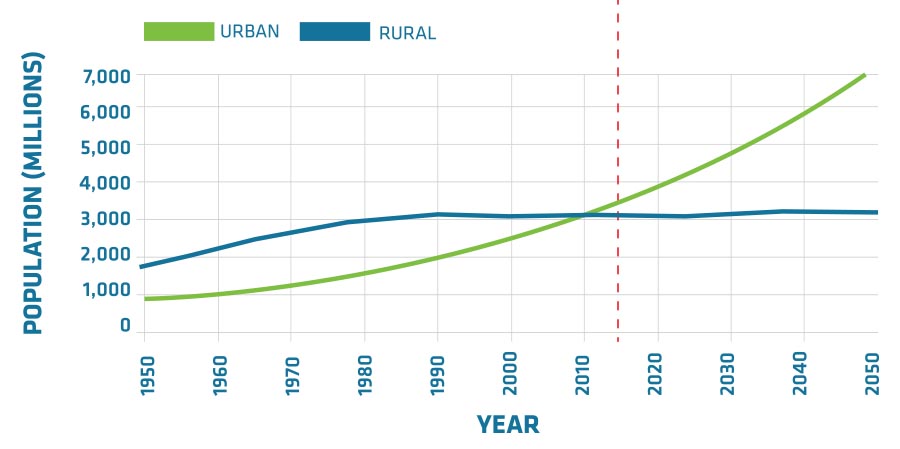There is a growing disconnect between where food will be grown, and where food will be consumed – what are the implications at a global and regional scale?
Living in a crowded world
Living in a Crowded World
In 2013, global urban population surpassed rural population. “The global urban population is expected to grow approximately 1.84% per year between 2015 and 2020, 1.63% per year between 2020 and 2025, and 1.44% per year between 2025 and 2030.” Much of the growth of urban areas is due to a shift in population from rural areas due to the availability of greater employment and educational opportunities. “Approximately 35% of current urban population growth is attributed to rural-urban migration.”
“The urban population in 2014 accounted for 54% of the total global population, up from 34% in 1960, and continues to grow.”
World Health Organization (2015)
Urban and rural population of the world, 1950-2050

Source: United Nations, Department of Economic and Social Affairs. World Urbanization Prospects, The 2014 Revision.
The increasing urbanization of people creates a potential further regional disconnect between where food is produced, and where it is consumed. In addition to greater total urbanization, we will see larger cities.
From 2010 to 2025, the GDP of the top 600 global cities will rise by over US$30 trillion, or nearly 65% of global growth.”
McKinsey Global Institute. 2012. Urban world: Cities and the rise of the consuming class.



